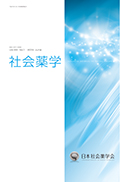Volume 34, Issue 1
Displaying 1-8 of 8 articles from this issue
- |<
- <
- 1
- >
- >|
Preface
-
2015 Volume 34 Issue 1 Pages 1
Published: June 10, 2015
Released on J-STAGE: October 16, 2015
Download PDF (214K)
Original Articles
-
2015 Volume 34 Issue 1 Pages 2-6
Published: June 10, 2015
Released on J-STAGE: October 16, 2015
Download PDF (392K) -
2015 Volume 34 Issue 1 Pages 7-19
Published: June 10, 2015
Released on J-STAGE: October 16, 2015
Download PDF (975K)
Reports
-
2015 Volume 34 Issue 1 Pages 20-23
Published: June 10, 2015
Released on J-STAGE: October 16, 2015
Download PDF (416K) -
2015 Volume 34 Issue 1 Pages 24-33
Published: June 10, 2015
Released on J-STAGE: October 16, 2015
Download PDF (1181K) -
2015 Volume 34 Issue 1 Pages 34-41
Published: June 10, 2015
Released on J-STAGE: October 16, 2015
Download PDF (1119K)
Annual Reports
-
2015 Volume 34 Issue 1 Pages 42-48
Published: June 10, 2015
Released on J-STAGE: October 16, 2015
Download PDF (1141K)
Series
-
2015 Volume 34 Issue 1 Pages 49-51
Published: June 10, 2015
Released on J-STAGE: October 16, 2015
Download PDF (313K)
- |<
- <
- 1
- >
- >|
